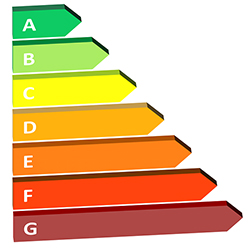Quantifying the distributional impact of energy efficiency measures

Download
Energy efficiency programmes often pursue two objectives simultaneously: reducing emissions and combatting fuel poverty. As a result, questions of distribution and equity are becoming increasingly important for both academics and policymakers. Quantifying where the costs and benefits fall can provide greater insight into the equity and cost-effectiveness of government policies, and improve our understanding of household investment decisions.
In this paper the authors exploit a large database of home energy efficiency upgrades and metered energy consumption to provide new evidence of the distributional impact of energy efficiency measures. The analysis focuses on measures installed through the UK Supplier Obligations, the principal policy instrument for delivering energy efficiency measures in the UK and widely used in other European countries. The research draws on the National Energy Efficiency framework Database (NEED), which holds information on metered gas and electricity consumption for over four million households and a period of eight years.
The authors employ a range of statistical and econometric tools to answer the following questions: (i) How much savings do key energy efficiency measures actually deliver? (ii) Do savings vary by level of household deprivation and (predicted) income? (iii) Do the observed differences persist over time? (iv) Can our findings be explained by differences in baseline consumption? And finally, (v) What do our results imply for the relative cost-effectiveness of measures?
Key points for decision-makers
- The research finds that cavity wall and loft insulation deliver average annual savings of about 9% and 3% respectively. Heating system replacements deliver average annual savings of about 9%. These results are very much in line with previous estimates.
- Results suggest that savings vary considerably by measure installed and level of household deprivation. These difference persist over time, and there is some evidence of an erosion of savings over time for loft insulation and heating system replacement.
- Differential baseline energy consumption is a factor but only partially explains the results.
- The measures are still largely cost-effective but much less so than previous ex-ante evaluations would suggest.
- At an individual household level, the private benefits of energy efficiency measures need to be reconsidered, with a greater focus on the non-financial benefits. The total welfare gains from upgrades to more deprived households may be considered greater if those households place more importance on increased internal temperatures and any resultant improvements to health and wellbeing than on energy and cost savings.
- At a societal level a greater focus on reducing carbon emissions, as opposed to cost-savings, is required.
A previous version of this working paper was published in November 2018 under the title Why the energy efficiency gap is smaller than we think: quantifying heterogeneity and persistence in the returns to energy efficiency measures.

